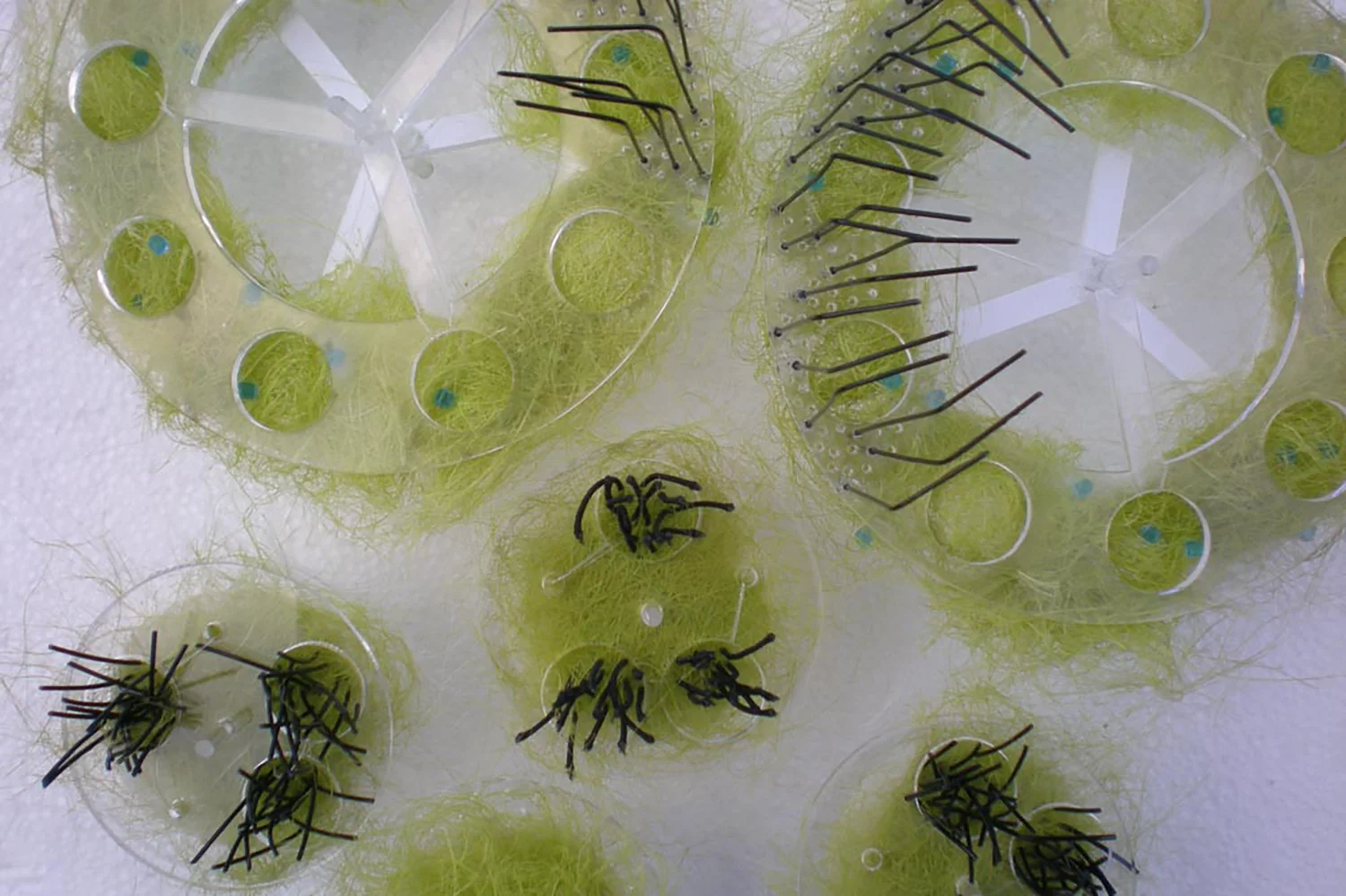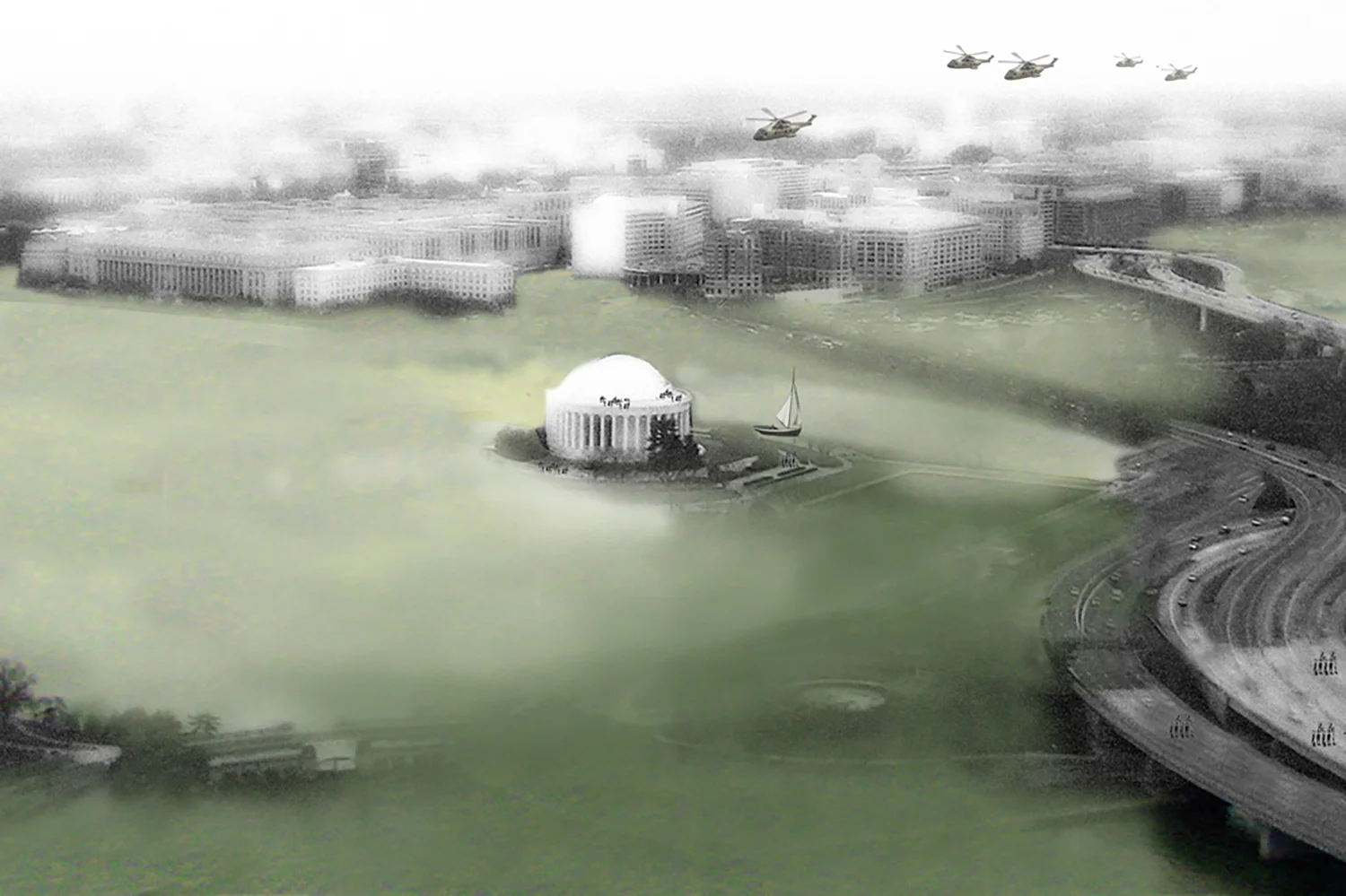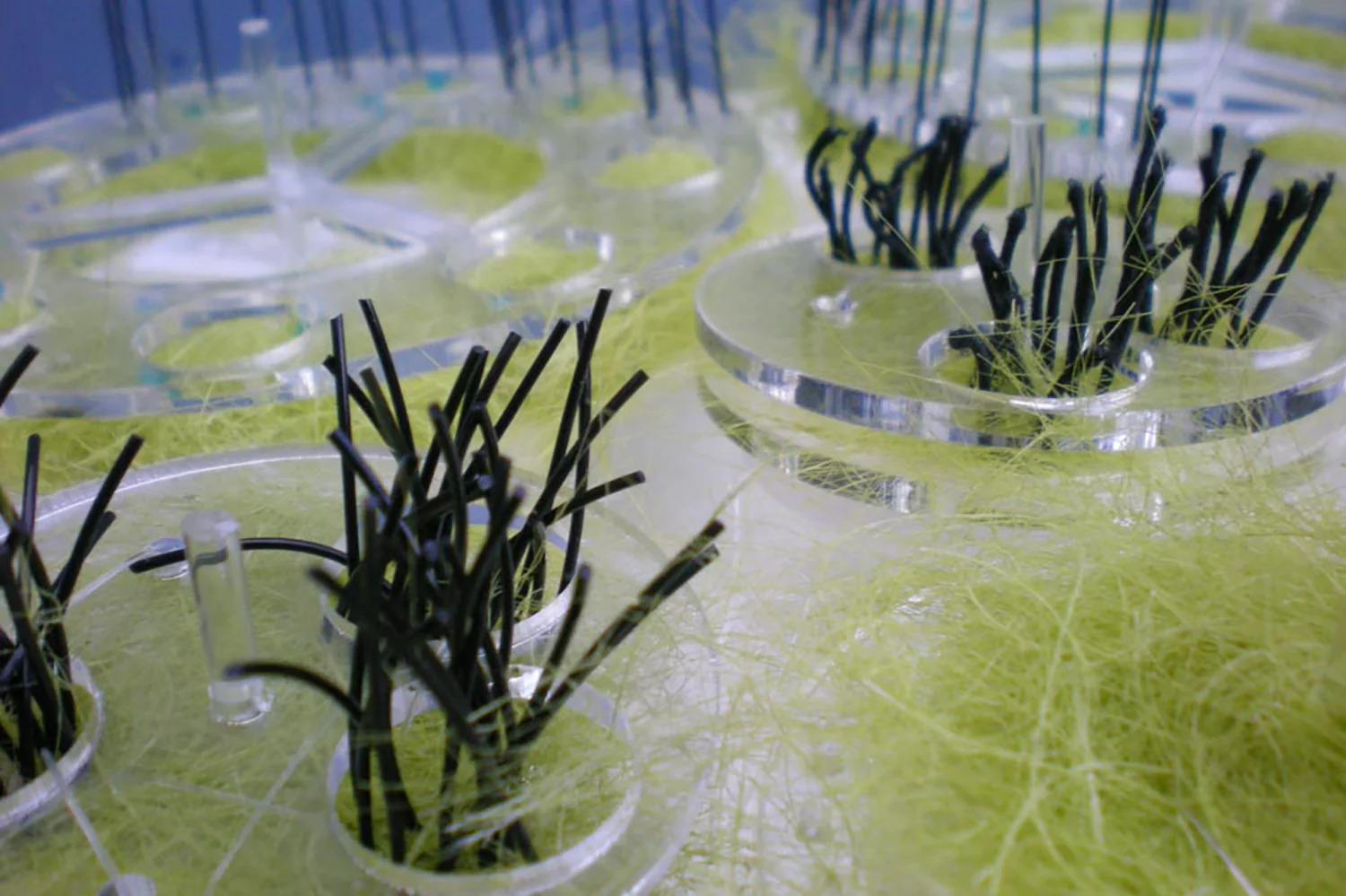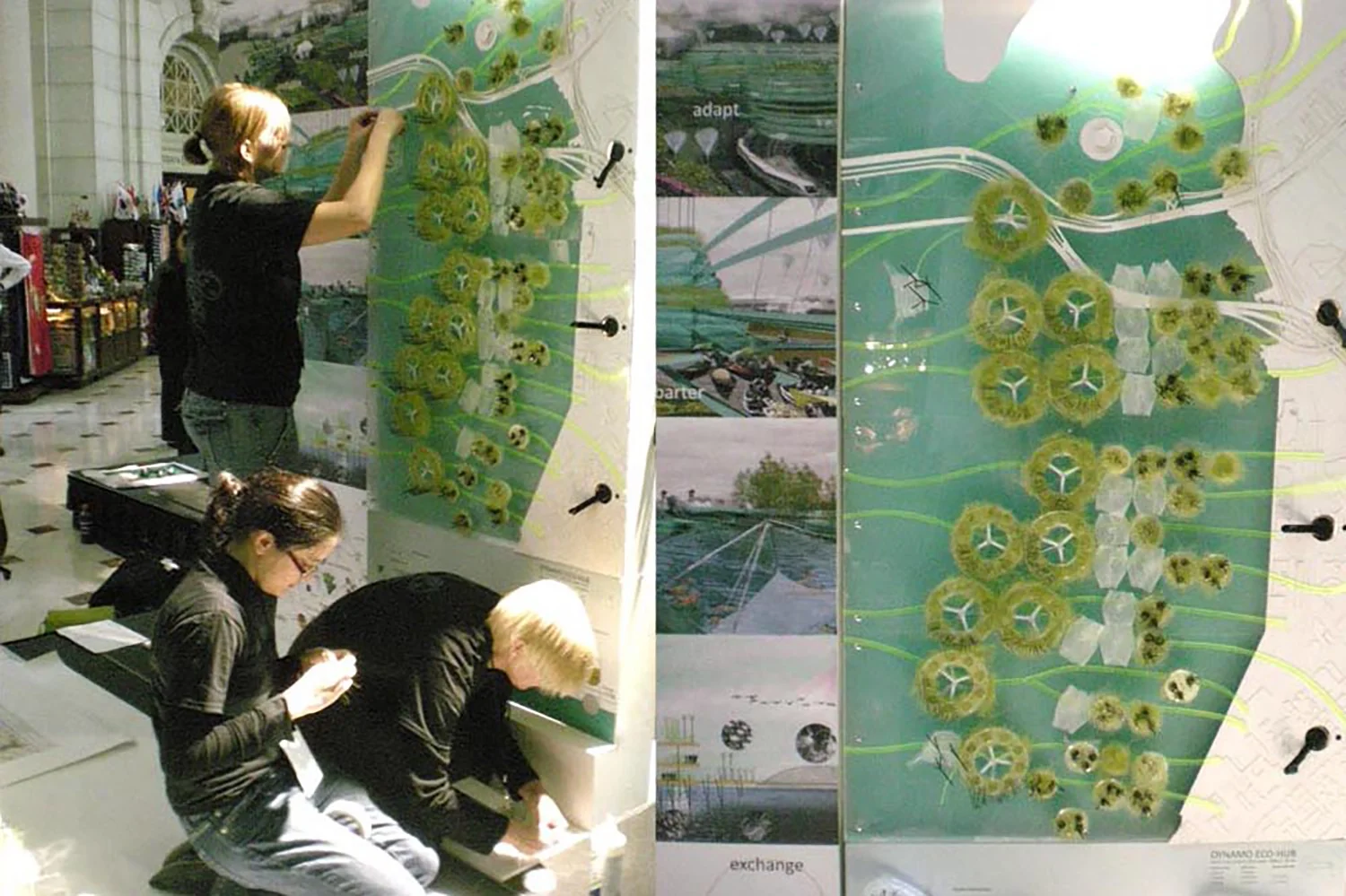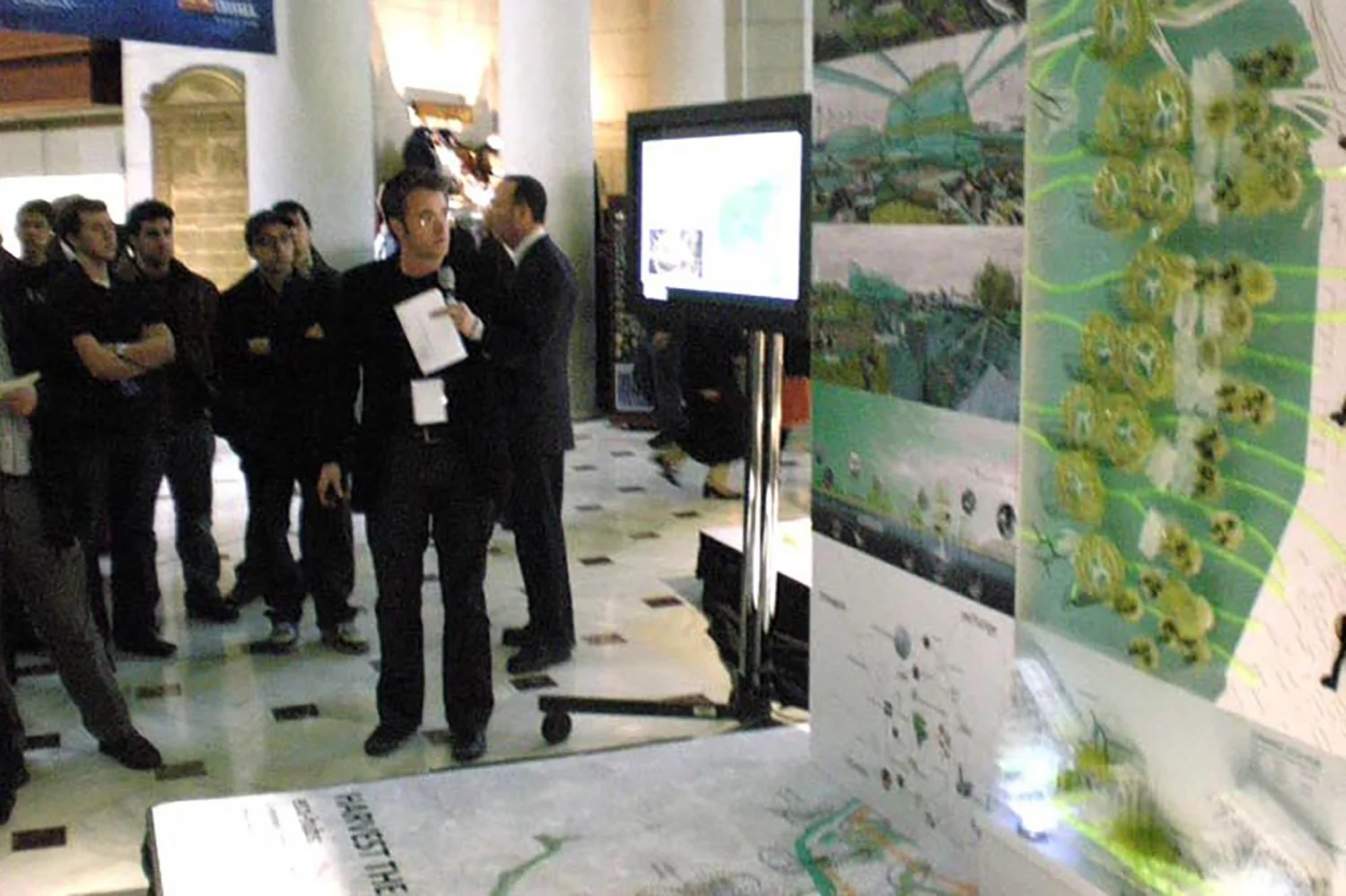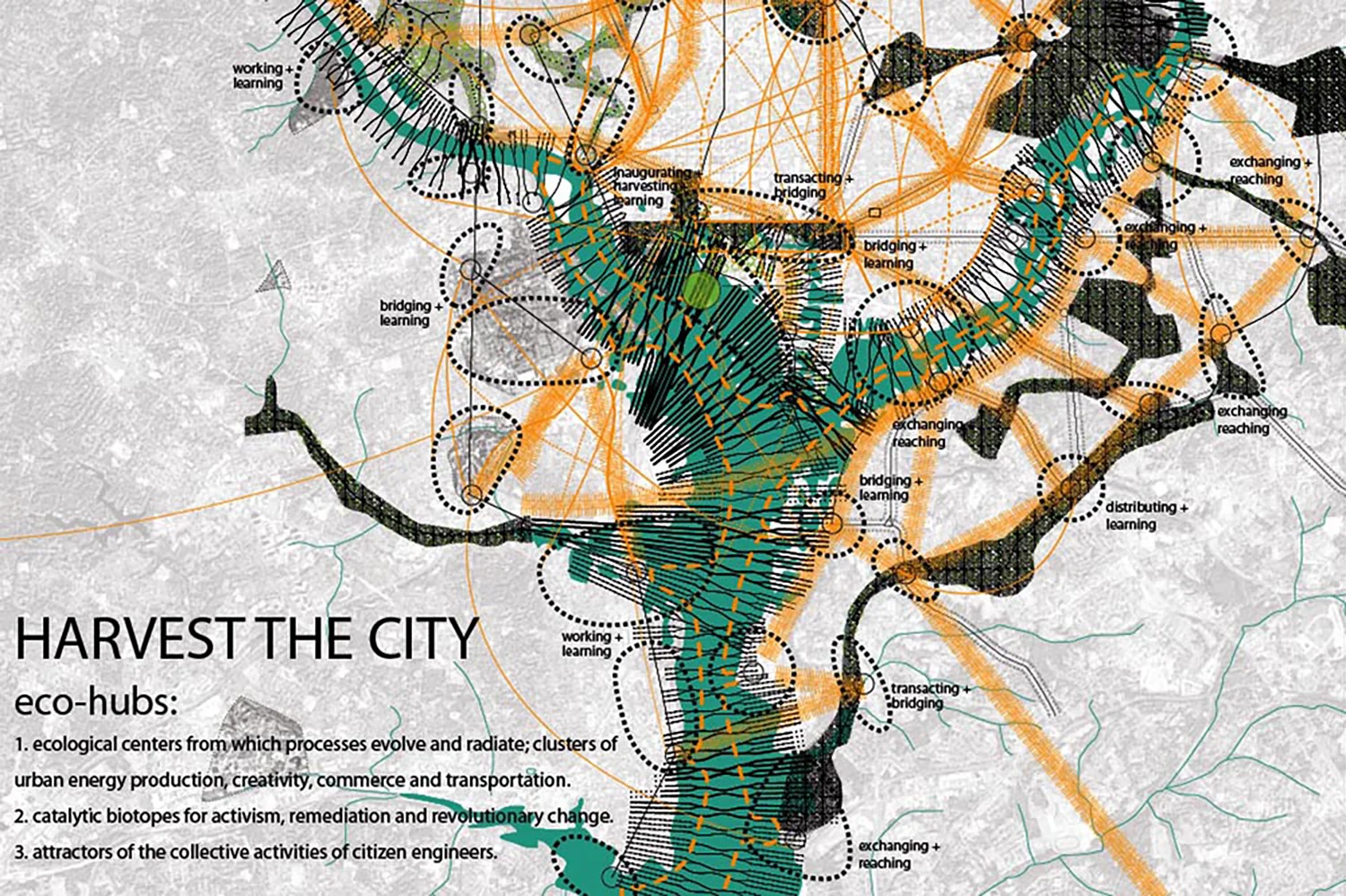DC - HARVEST THE CITY
After years of struggle and decay the flooded city of Washington D.C. will be reseeded by waves of resourceful citizen engineers cultivating adaptive communities on rising tides. Out of bad habits and dirty technologies grow diverse energy sources and intelligent building systems. Out of polluted waters and broken food chains grow living machines of water purification and community food supplies. Out of depleted social capital grow open markets of local exchange.
What is an eco-hub:
1. Ecological centers from which processes evolve and radiate; clusters of urban energy production, creativity, commence and transportation.
2. Catalytic biotopes for activism, remediation and revolutionary change.
3. Attractors of collective activities of citizen engineers.
Technical Notes from Byron Stigge @ Buro Happold
Some of the 10 acre pods [eco-hubs] will focus on the technical infrastructure delivery of energy generation and water treatment processes. If built today with best practice technology, these pods will generate 4MW of solar energy and 1MW energy from biogas. This would power approximately 3,000 homes. But we project both solar technology and residential energy demand to improve to a point where it is reasonable to believe these pods would power over 12,000 homes. Water treatment settling tanks, membrane filtration and microbial treatment processes are easily scaleable to serve a population of up to 100,000 people per pod (though less is just as well) and are located under the solar canopy. Sludge waste from the settling tanks (known as 'cake' to those in the business) is the primary input into anaerobic digestion tanks which convert the sludge to soil fertilizer, liquid fertilizer (liquor) and biogas (methane). Biogas can be bottled for redistribution for cooking and heating or it can be burned directly in the energy pod to generate electricity and heat. The solar canopy and the water treatment functions are well suited for pod stacking but the water treatment plant needs only 1 acre under the solar canopy.
Some of the 10 acre pods will focus on food production. An optimized, fertilized (organically), and heated farming pod can easily serve vegetables, grains and fruits for over 10,000 people for a year (no meat in my calc, sorry carnivores). Farming pods are likely to be more focused on fewer products for some economies of scale, but with enough human work input as many as 100 food products can be grown through the course of the year in one 10 acre food pod.
Some of the 10 acre pods will focus on water purification. Reed beds, polishing ponds and water fountains make up a matrix of final water cleansing in the pod and can serve the potable water needs for 5,000 households under typical demands of today. This may actually be the limiting reagent as supplying drinking water through biological processes takes a lot of space (and heat in the winter). But in an emergency situation, a water purification pod could serve water demand of over 50,000 people.
Of course a hybrid pod that contained all of the above infrastructure services is most ideal as solar energy feed water testment process, water testment process feeds agriculture process, agriculture process feeds composting process etc. All infrastructure systems are interdependent and the more they are pulled apart for economies of scale, the more unreliable and inresilient the entire system becomes. And a pod that contained actual living and working units and connected to other pods through regional transit would also maximize the integrated 'sustainability' of the concept.
... But this might just be called a 'city' - Though it would be a city of the future.
Date: 2008
Location: Washington D.C.
Design: Jason Kelly Johnson & Nataly Gattegno
Team: Julie Bargmann,Steve Brummond, Chris Fannin, Karey Helms, Steven Johnson, David Malda, Suzanne Mathew, William Morrish
Consultants: Kristina Hill, Jeana Ripple, Byron Stigge
Support: the University of Virginia School of Architecture and Landscape Architecture.
Awards: Finalist, City of the Future Competition, History Channel
Press Release: Washington Post; UVa Today

